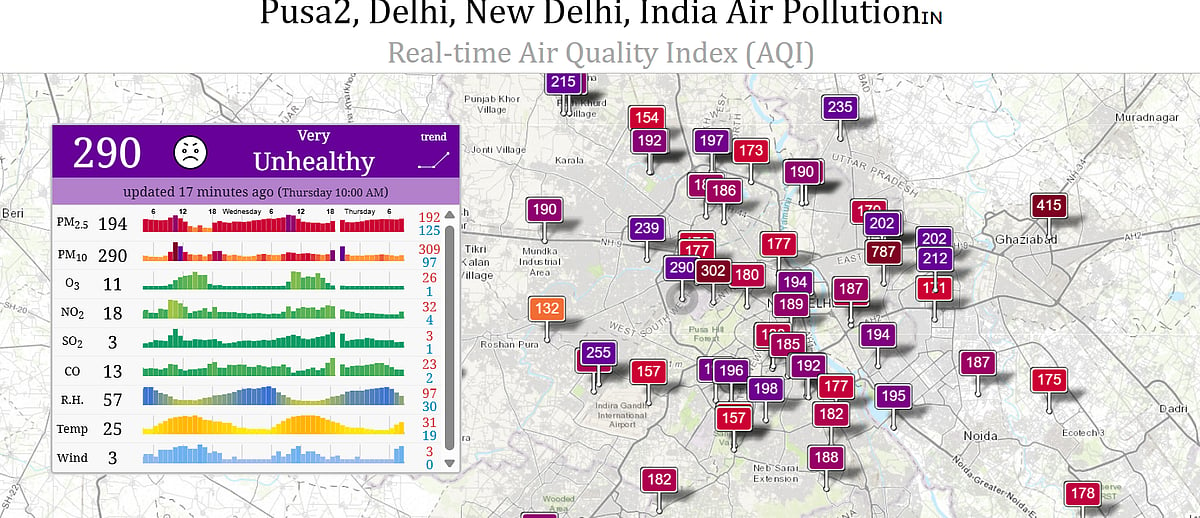Delhi Air Pollution: Many Places Record 'Very Unhealthy' Air Quality — Check Health Advisory
Multiple areas recorded an AQI above 300, which means the air quality in these localities has turned 'very unhealthy'.

The air quality in Delhi at 10 am on Oct. 16 is alarming, with the AQI touching the 290 mark as per the Early Warning System (EWS). This is classified as "very unhealthy" as per EWS. Multiple areas recorded an AQI above 300, which means the air quality in these localities has turned 'very unhealthy'.
The AQI reading is categorised as Good (0-50), Moderate (51-100), Unhealthy for sensitive groups (101-200), Unhealthy (201-300), Very Unhealthy (301-400), and Hazardous (401-500). Thus, the higher the AQI reading, the unhealthier it gets to breathe.

AQI at 10 am
The air quality in the national capital was recorded in the 'unhealthy' category for the third consecutive day on Thursday morning. According to the Central Pollution Control Board, an AQI between zero and 50 is considered 'good', 51 to 100 'satisfactory', 101 to 200 'moderate', 201 to 300 'poor', 301 to 400 'very poor' and 401 to 500 'severe'.
On the morning of October 16, 2025, several localities in Delhi recorded an Air Quality Index (AQI) of over 300.
Specifically, Wazirpur recorded the highest AQI at 342, followed closely by Anand Vihar at 339 and Dwarka, Sector 8 at 338. Mathura Road also experienced 'Very Poor' air quality with an AQI of 311.
Health Advisory
The Ministry of Health and Family Welfare has listed a health advisory when the AQI is more than 200. The advisory states that on the days of poor to severe plus air pollution (AQI>200), citizens should:
Avoid outdoor morning and late evening walks.
Avoid jogging, running or other exertional physical activities.
Avoid opening external doors and windows during morning and late evening hours.
Ventilate rooms if necessary between 12 p.m. and 4 p.m. in the afternoon.
Remain indoors, and reschedule outdoor activities as per AQI levels.
If a person experiences breathlessness, cough, chest discomfort or pain, giddiness, or irritation in the eyes (red or watery), consult the nearest doctor immediately.
High-risk people like pregnant women, young children and the elderly should restrict outdoor movements as far as possible.
Patients with chronic pulmonary and cardiovascular disease should keep their prescribed medicines readily available while going outdoors.
Patients with chronic pulmonary and cardiovascular disease should keep a check on the exacerbation of symptoms.
Patients with chronic pulmonary and cardiovascular disease could seek immediate medical advice if symptoms worsen during poor to severe-plus air pollution days.
Use close-fitted N95 or N99 masks to reduce exposure to air pollution.
Use air purifiers, as they may be beneficial to reduce the effects of air pollution.
Air conditioners in buildings and vehicles may use "re-circulate" mode to avoid contact with outside polluted air.
Drive the vehicle with windows closed to minimise exposure to air pollution.
If someone experiences cough, wheezing, or chest tightness, the level of exertional activity should be decreased or stopped, and they should immediately consult the nearest doctor.

